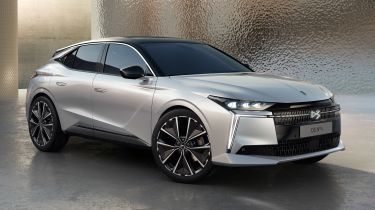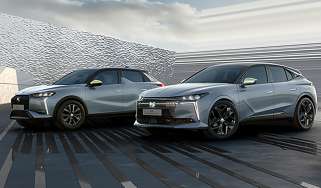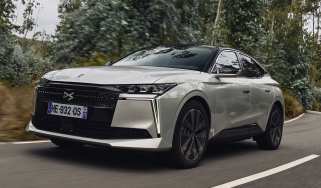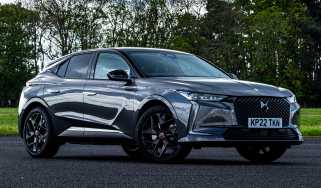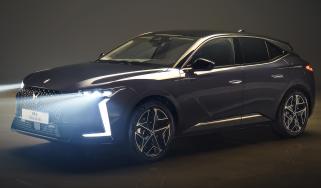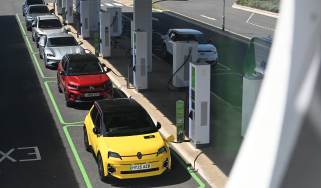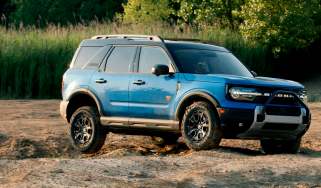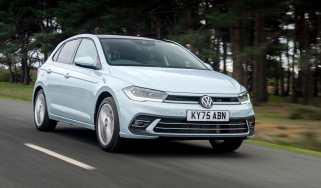Chic and all-electric DS Automobiles No4 to cost from £36,995
The stylish new French hatchback will arrive in EV and hybrid forms, the latter costing only £32,200 to undercut the EV
UK pricing for the new DS Automobiles No4 has been revealed. Hybrid and all-electric variants of the posh midsize hatchback will cost from £32,200 and £36,995 respectively. While this new model is basically a facelift of the previous DS 4, the update brings with it an all-electric powertrain option for the first time, giving the new No4 a leg-up on key premium rivals like the Audi A3, BMW 1 Series and Mercedes A-Class.
The new all-electric DS No4 E-Tense model will be available in three trim options starting with the Pallas at £36,995, rising to £39,160 for the Pallas+ and topping out at £41,860 for the Etoile.
Standard equipment on all models includes:
- A pair of 10-inch digital displays
- Dual-zone climate control
- LED headlights
- Double glazing on the front windows
Pallas+ models add:
- Built-in sat-nav
- AI-powered voice commands for the infotainment system
- Wireless phone charging
- Keyless entry and start
- A heat pump
At the top of the E-Tense range, the Etoile adds:
- Alcantara interior
- Head-up display
- Matrix LED headlights
- Double-glazing all-round
The hybrid powertrain options have a slightly different range structure, with pricing opening at £32,300 for the Pallas+ and rising to £35,000 for the Etoile. However, buyers can also specify a top-spec Etoile Nappa specification on hybrid models, adding Nappa leather trim, electric and heated seats for £37,400. DS will also offer an updated plug-in hybrid with these same trim levels at a £6,800 premium.
Available to order now, the DS No4 will reach customers in the fourth quarter of this year at around the same time as its larger DS No8 sibling. And if you’re in the market for a DS, or something similar, make sure to check out the Auto Express marketplace for the latest deals.
Powertrains
The new all-electric DS No4 shares many of its key elements with the Peugeot E-308, including its fundamental technical layout. This includes a front-mounted e-motor that generates 213bhp and draws energy from a 58.3kWh battery pack that’s enough for a claimed 280 miles of range on the WLTP cycle.
The No4 is capable of up to 120kW DC fast charging, topping up the batteries from 20 to 80 per cent in around 30 minutes. These are not groundbreaking figures, but compare favourably with similarly sized mixed-powertrain rivals such as the Peugeot E-308 that also need to support both ICE and EV layouts.
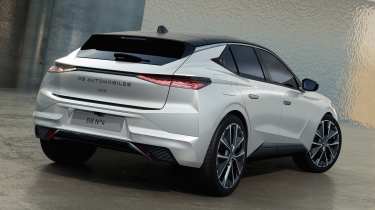
The plug-in hybrid No4 has gained its own upgrades, with a more impressive 50-mile electric range thanks to a bigger 14.6kWh battery pack. This powers a 109bhp e-motor that’s integrated into a new seven-speed dual-clutch transmission, and is paired with a 1.6-litre turbocharged four-cylinder petrol engine that generates 176bhp on its own. DS rates the combined power figure at 222bhp.
The entry-level hybrid option combines a 143bhp 1.2-litre three-cylinder engine with a small e-motor and six-speed dual-clutch transmission. DS claims this model can run on e-power for around 50 per cent of the time in urban environments.
Styling and interior
Alongside these technical upgrades is a subtle collection of styling and tech updates; up front, the lights, grille and bonnet have been redesigned for a new lighting signature that extends across the nose.
The rear end has also been freshened up, with new rear lights connected with a dark chrome strip. Wheel sizes vary between 19 and 20 inches, the latter optional.
Inside, DS’s intricate design remains but incorporates a larger 10-inch driver’s display screen in addition to the existing 10-inch touchscreen. Apple CarPlay and Android Auto are standard-fit, and Pallas+ models and up receive a new AI-powered voice command system.
With three different powertrains, boot space varies between 430 litres for the hybrid, reducing to 390 litres for the EV and 360 litres for the PHEV.
Did you know you can sell your car through Auto Express? We’ll help you get a great price and find a great deal on a new car, too.
Find a car with the experts

